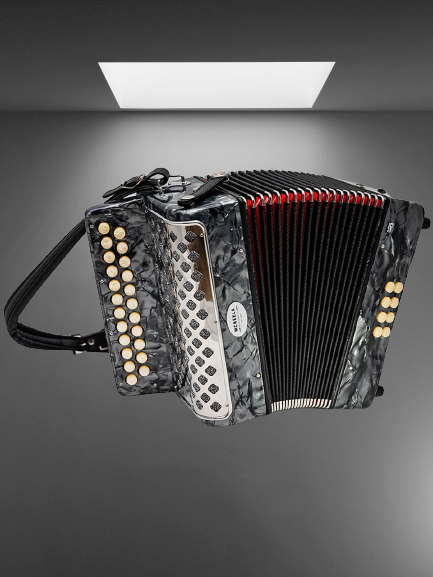How to Pick Your First Accordian?

The accordian is a musical instrument with a long and colorful history. It can be found in most cultures and it is a very popular type of instrument. Some of its key elements are the bellows, reeds, chords, and registers.
Origins
The origins of the accordian date back to the early 19th century in Berlin, Germany. This instrument is a wind instrument, similar to a mouth organ, with metal reeds vibrating to produce sound inside the body. The reeds attach to the bellows using foot-operated bellows.
Accordions were used in the Romantic period as chamber instruments. They were also used to accompany light classical music. They were popular among the emigrants who came to America from Europe during the nineteenth and twentieth centuries.
According to Cyrillus Damian, the inventor of the accordion, the first known instrument to use a free vibrating reed was the Chinese cheng, a wind chamber composed of bamboo pipes. European musicians were introduced to the Chinese cheng in 1777.
According to Anton Haeckel, a German musician called Christian Friedrich Buschmann created a new type accordion, the Handaoline, in the middle of the 19th century. He attached expanding bellows to the instrument and designed it to have a keyboard that played freely with the reeds.
Reeds
In accordion music, reeds play an important role in the sound of the instrument. There are many types of reeds available for different instruments. Some are handcrafted while others can be machine made. You can achieve greater performance by choosing the right type of reed to fit your instrument.
The airflow required for a particular note will vary depending on the size and shape of the reed. The suction from the airflow decreases as the distance between the reed’s tips and its frame shrinks.
The reeds and reed blocks must be tuned to improve the sound quality of an accordion. A reed should have a smooth aperture. This allows the reed to be more air efficient. This is especially important when playing the bass end of the instrument.
Bellows
There are many uses for accordion bellows. They are often used in articulated buses or cooling loops. They are also utilized in anesthesia machines.
The most basic type of bellow is made of leather or synthetic bindings. They are made in an open or closed position. They are usually connected to hinges. Some types are available in electronic versions.
An accordion bellows has no valves, unlike an electric guitar. The bottom and middle leaves contain valves, which are moved up and down in order to regulate the flow of air.
The bellows are attached by hinges. These hinges are connected to weights that provide the necessary pressure to expand and collapse the bellows. They are usually made from stretch-free leather.
Register
When you are playing an accordian, you should learn about the different registers. This information will help you choose the right set of reeds to perform on your accordion. This will ensure you will enjoy the music you play on your accordion.
The switches that control the reeds can give you an idea of the operation of the registers. Generally, the registers are arranged in a similar direction and are activated from the outside of the instrument. An icon is used to identify the different registers.
The accordion’s reeds are divided into five sets. Each reed has two parallel chambers. The corresponding space is empty when the reed closes. The corresponding space in the reed is filled with dots when it is opened. These dots represent the reeds used when that register is selected.
Chords
The accordian is a keyboard-like instrument. It uses an exciting system of bass buttons and register switches. It also features big 9ths, funky suspended chords, and augmented chords. Some accordionists also add sharps and flats, and play a few short note melodies.
The accordian’s bass buttons are organized according to a circle with fives. This means that the bass note and the chord part are combined in the same octave. The bass note is often used to “ground” the chord part. The chords themselves can be played as two separate notes, but they usually sound in several octaves at once.
The circle of fifths goes up from middle C, down to E, and back up again. The A, D and E are the first, second and third fifths, respectively. Generally, the fourth is the major chord. https://www.youtube.com/embed/7ZtFgMmvO1U

